23 Mar 2023
Statistics
Domestic undergraduate applications and offers at semester 1 closing 2023
The Universities Admissions Centre (UAC) processed domestic undergraduate applications for 27 institutions in 2022–23, mainly in NSW and the ACT. Applications for tertiary study in 2022–23 opened on Wednesday 5 April 2022 and semester 1 applications closed at midnight on Friday 2 February 2023.
UAC received 73,898 domestic applications for undergraduate study in the 2022–23 admissions year, 3,710 (4.8%) less than the same time the previous year.
A total of 100,943 offers were made to these applicants.*
Many students have also applied directly to individual universities for study next year to maximise their chances of receiving an offer. UAC has processed another 126,000^ of these applications on behalf of individual universities#.
*There are more offers made than there are applicants because, even though applicants can only receive one offer in each offer round, they can receive an offer in more than one round. Read more at Offers FAQ.
^Applicants may apply directly to several universities so this figure is not the count of unique applicants, but the number of applications received
#UAC processes direct applications on behalf of Australian Catholic University, Australian College of Physical Education, Australian National University, CQUniversity, Charles Sturt University, Macquarie University, University of New England, University of Newcastle, University of Tasmania, University of Technology Sydney, University of Wollongong and Western Sydney University.
Applications and offers by applicant type
Applicants are divided into four types: NSW Year 12, ACT Year 12, interstate and International Baccalaureate Year 12, and non-Year 12.
For the Year 12 groups (NSW, ACT, Interstate and IB), the number of applicants has decreased compared with last year.
The number of non-Year 12 applicants has also decreased compared with last year, with 2,523 less non-Year 12 applicants applying in this cycle.
Applications and offers to direct entry portals have increased each year as the number of portals UAC operates on behalf of institutions increases.
Applications by applicant type
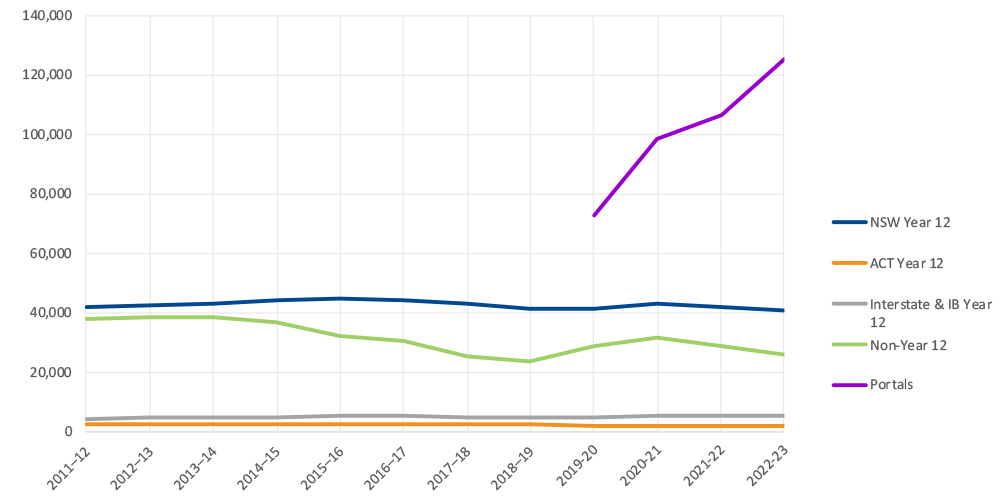
The following chart shows total offers by applicant type up until the release of final semester 1 offers (Thursday 7 March 2023) for the last 12 admissions periods.
Offers by applicant type
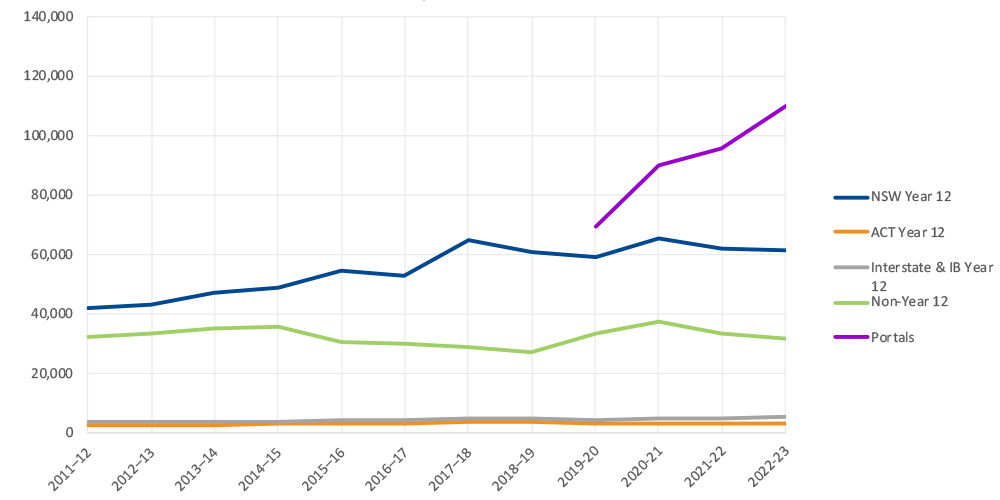
Gender analysis
The gender split of applicants was similar to the previous year: 56 per cent of Year 12 applicants were female, while 57 per cent of non-Year 12 applicants were female.
Age analysis
Almost all Year 12 applicants in 2022–23 were 19 years old and under (99.7%). Around 78 per cent of non-Year 12 applicants were 24 years old and under. The breakdown by age group for non-Year 12 applicants is shown in the following chart.
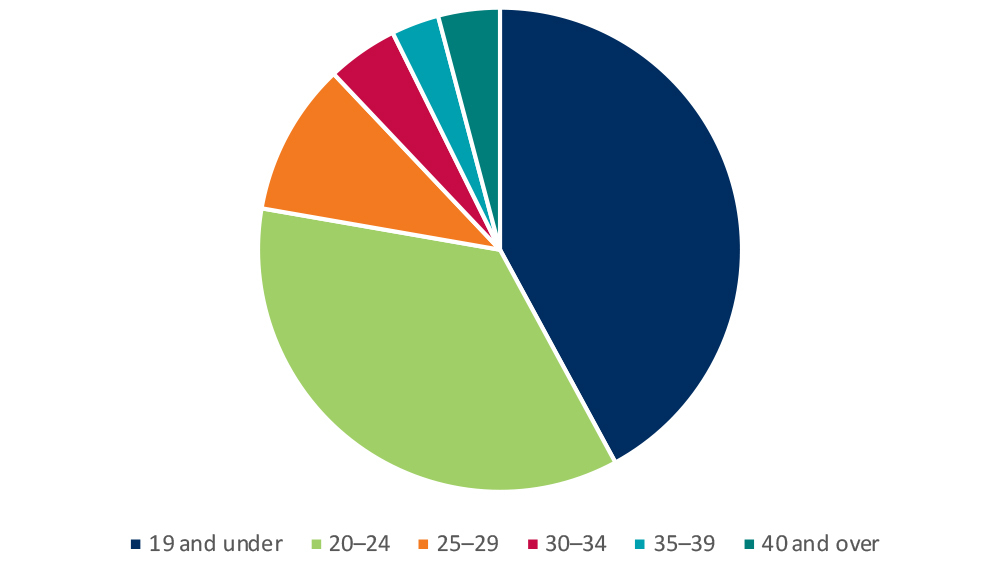
First preference analysis
Domestic undergraduate applicants can choose up to five course preferences. Their first preference is the course they would most like to study.
First preference by field of study and applicant type
The top five fields of study listed as first preferences by NSW and ACT Year 12 applicants were almost identical. Both groups had most first preferences in Society & Culture and Health.
For non-Year 12 and interstate and International Baccalaureate Year 12 applicants, most first preferences were in Health, followed by Society & Culture.
Overall, Health has once again taken the top spot as the favoured field of study, with 26 per cent of UAC’s 2022–23 applicants listing it as their first preference, Society & Culture received 21 per cent of first preferences across all applicant types.
First preferences by field of study
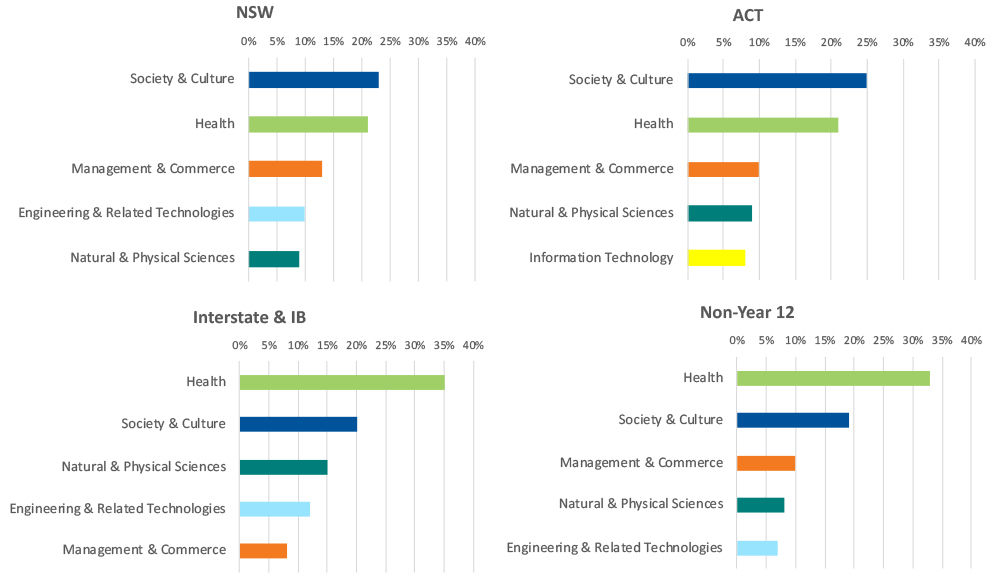
Offers by field of study
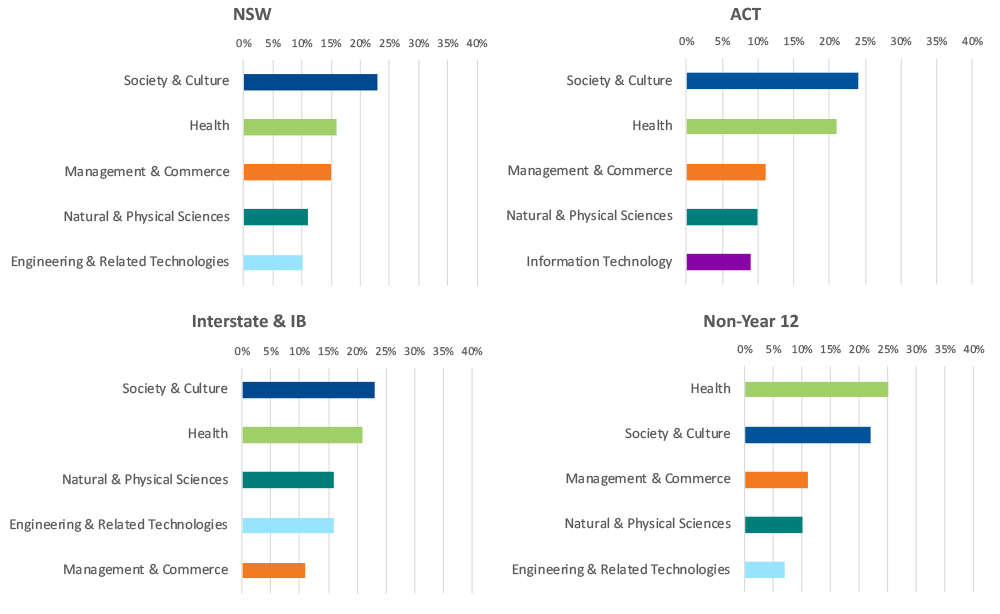
First preference by field of study and gender
While both females and males had most first preference courses in Health, the spread of first preference courses across fields of study was greater for males than for females.
Over half of female applicants listed their first preference course in either Health (32%) or Society & Culture (25%). In contrast, popular fields of study for males included Health (19%), Society & Culture (17%), Management & Commerce (15%), and Engineering & Related Technologies (15%).
Compared with males, a smaller proportion of females had first preference courses in Engineering & Related Technologies, Management & Commerce and Information Technology.
Field of study of first preferences by gender
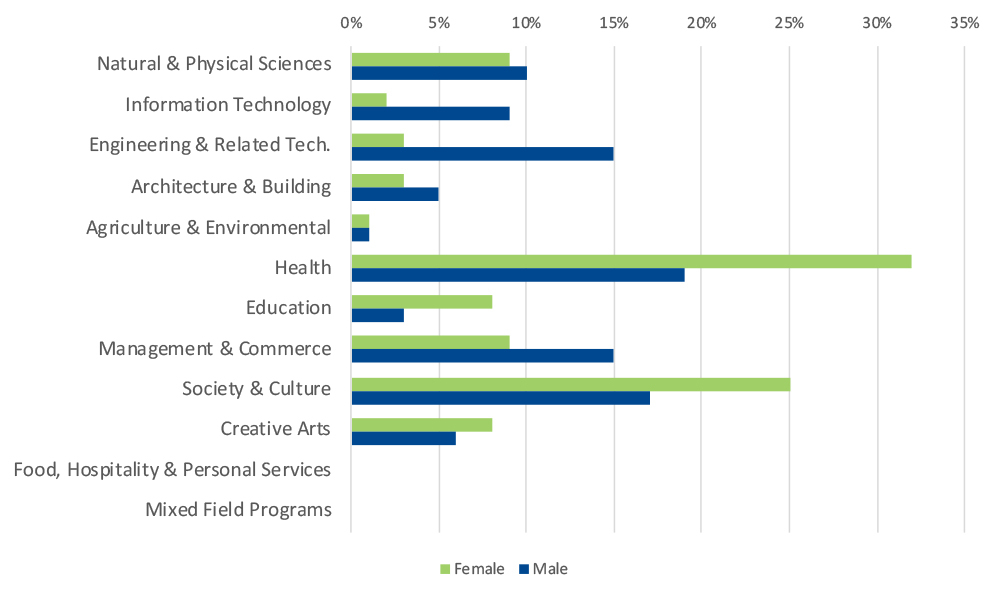
Visit UAC’s statistics pages for more application and offer data.